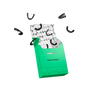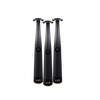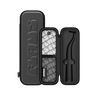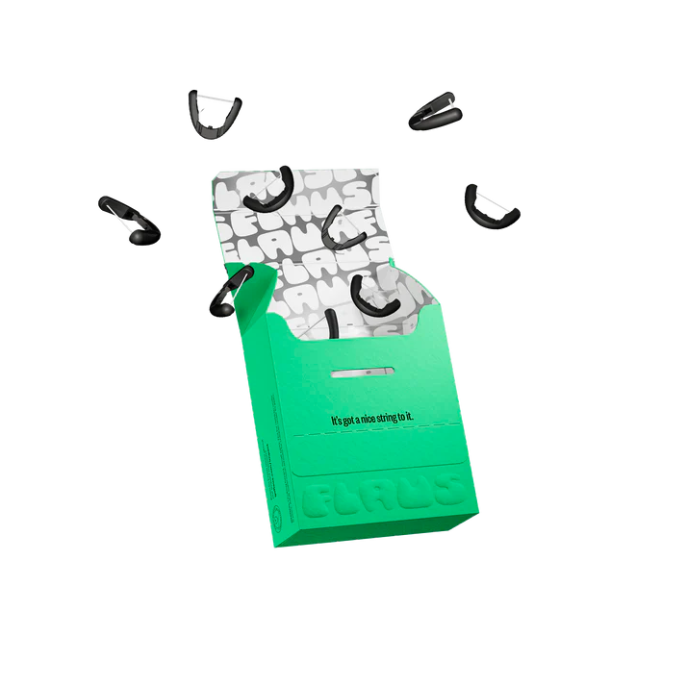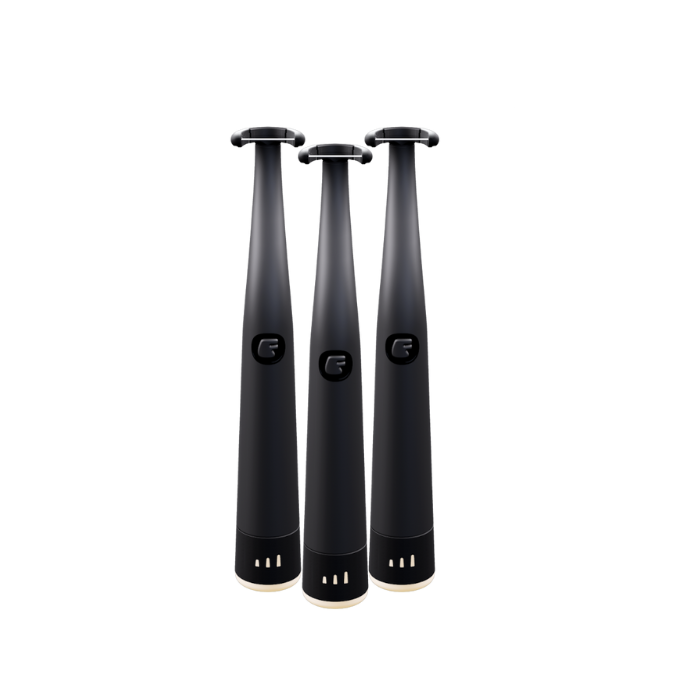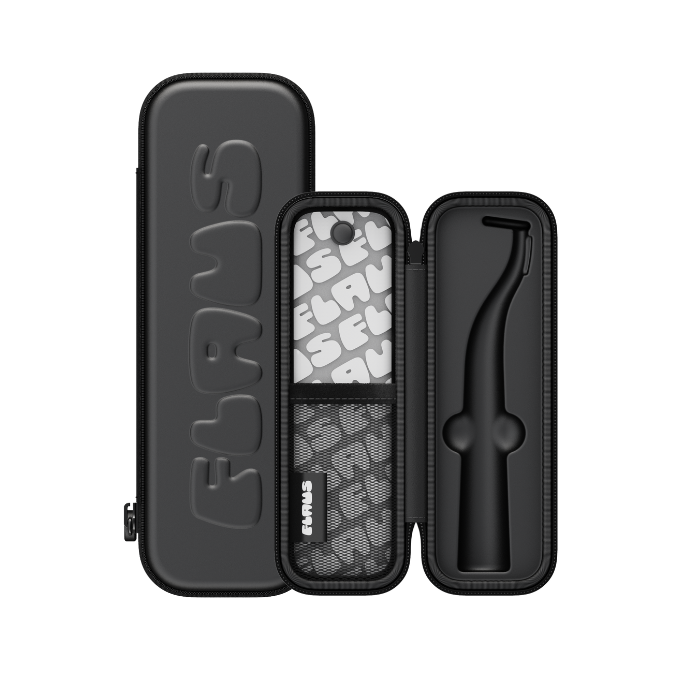In a world ever evolving with innovative health solutions, the battle for oral hygiene dominance between gum picks vs floss advances. But which one truly is the guardian of your pearly whites? Drawing from expert opinions, science-backed research, and first-hand testimonials, we delve into an incisive comparison between these two oral care staples. Say goodbye to confusion as we shine a light on their features, fringe benefits, and possible fallacies. Get ready; it's time to unveil the real MVP in maintaining your million-dollar smile!
When it comes to oral hygiene, both gum picks and floss can be effective tools. However, traditional flossing with string floss allows for better adaptation to tooth contours and thorough cleaning compared to gum picks. String floss also enables the "C" shape technique close to the gum line, which is important for removing plaque and food particles effectively. Nevertheless, if you have difficulty using string floss or have specific needs, such as disabilities or limitations, gum picks can still be a suitable alternative. It's always a good idea to consult with your dentist or dental professional to determine which option works best for you.
Understanding Gum Picks and Floss
Keeping your teeth healthy is critical if you want to maintain good oral health. Although brushing your teeth twice a day is part of the routine, it's not enough to keep your mouth healthy. You also need to floss to remove food particles that are stuck between your teeth - areas that the toothbrush cannot reach.
Picture a situation where you have just had a meal, and there are food particles stuck in your teeth. They could eventually lead to plaque build-up and tooth decay if left unattended.
Two of the most popular items used for interdental cleaning are gum picks and floss. Gum picks constitute small plastic sticks that have a pick on one end that is designed to get in the space between your teeth. Floss, on the other hand, is thin, soft string that it is inserted between teeth and moved upside down along each side of each tooth.
Gum picks are easy to maneuver because they come with handles that make them more comfortable than using regular floss. Gum picks can be more attractive if you're looking for convenience since you don't have to put your hands in your mouth to floss.
However, choosing which of the two dental hygiene tools to use can be confusing if you don't entirely know how they work to clean teeth; below, we've highlighted some information about these interdental cleaning tools.
How They Work to Clean Teeth
Flossing is an effective way of removing plaque and bacteria from hard-to-reach areas around teeth such as in between spaces where many gum diseases begin. Traditional flossing calls for inserting string floss between each tooth before moving up and down using a back-and-forth motion. The technique for using string floss effectively involves curving it into a "C" shape against one tooth and sliding it gently beneath the gumline until you meet resistance. Then scrape the floss against the tooth while moving it up and down to remove plaque and food particles.
Suppose you imagine that flossing your teeth is like using a squeegee on a window. The more strokes, the cleaner the window becomes. Regular deep flossing cleans denser areas around your gums like windows at corners of an office building with many floors.
Gum picks can be used as a more comfortable alternative to traditional string floss when you are short on time or space to clean your teeth. They have plastic handles for gripping, which makes them easier to use than traditional floss. However, this convenience comes at the cost of effectiveness since picking can't access every spot compared to string floss.
| Gum Picks | Floss |
|---|---|
| Pre-threaded hence convenient | Need to thread before use |
| Has a handle that makes it easy to maneuver | Can be tricky for some people to handle |
| Not suitable for cleaning difficult-to-reach areas | Great for fitting between tight teeth spaces |
| Not environmentally friendly due to plastic waste | Environmentally responsible packaging options available |
Regardless of what tool you choose, knowing how it works and following correct usage techniques is essential in keeping your mouth healthy.
- The takeaway from this information is that flossing is an important part of maintaining oral hygiene as it helps remove plaque and bacteria from hard-to-reach areas around teeth. Traditional string flossing involves a specific technique of curving the floss into a "C" shape against a tooth and sliding it gently beneath the gumline. While gum picks may be more convenient, they are not as effective in accessing every spot compared to string floss. Additionally, gum picks are not environmentally friendly due to plastic waste. Regardless of the tool chosen, understanding its proper usage technique is crucial for maintaining oral health.
Comparing Gum Picks and Floss for Oral Hygiene
When it comes to oral hygiene, regular flossing is a crucial component of maintaining healthy gums and teeth. But with the addition of gum picks on the market, how do they fare against traditional flossing?
To understand the differences between gum picks and flossing better, let's compare it with two cleaning tools: a broom and a dustpan. Even though both items serve different functions, sweeping floors require either one or another instrument. Similarly, while both gum picks and floss can clean one's teeth effectively, their approach is different.
Floss moves up and down between teeth, reaching crevices that bristles on toothbrushes cannot reach. It scrapes away food particles from along the gum line where bacteria thrive. Gum picks offer an alternative method for cleaning these tight spaces by using small pointed plastic heads to get in between teeth.
With that in mind, let's explore the pros and cons of using gum picks to see how they stack up compared to traditional string floss.
Pros and Cons of Gum Picks
Pros
- Ease of Use: One of the major benefits of gum picks is their convenience. They are easy to handle and perfect for those who might struggle with wrapping floss around fingers or maneuvering through tight spaces.
- Cost Effective: Picking up gum picks from your local pharmacy could be more cost-effective than investing in dental floss as packs generally come with multiple heads.
- Suitable For Those With Limited Mobility or Dexterity: Flossing requires a bit of dexterity that not everyone has; some individuals lack coordination owing to physical impairments or conditions such as arthritis, which might make manipulating strands difficult.
Cons
- Less Effective than Floss: Even though gum picks provide an alternative way to clean teeth' hard-to-reach areas, they can't completely replace traditional floss as they are less effective in removing plaque and debris between teeth' tight spaces.
- Can Harm Gums and Enamel: Applying too much pressure while using gum picks can harm gums and, in severe cases, cause bleeding. It can also wear down the enamel gradually.
Just like using a knife to cut vegetables – there's the potential to harm yourself if used incorrectly- the same applies to gum picks.
Gum picks and floss serve different cleaning purposes; however, it's essential to remember that neither is a substitute for proper brushing techniques and professional dental care. It's always advised to check with your dentist before incorporating gum picks into your daily oral hygiene routine.
Pros and Cons of Floss
Dental floss has been the go-to interdental cleaning tool for decades and is generally recommended by dental professionals as an effective method of removing plaque and food debris in between teeth. The benefits of using floss daily are many, but there are also some cons that one needs to keep in mind.
One of the upsides of flossing is that it's relatively easy to use once you get accustomed to it. It's also widely accessible and affordable.
However, some people experience difficulty maneuvering the floss string, leading to missed spots between teeth. Improper flossing can lead to injuries like gingival bleeding and gum recession over time if too much force is applied or if done haphazardly.
Regular floss users may find it tiring or time-consuming which may tempt them to compromise on their interdental cleaning rituals.
Other downsides include instances where they fail to clean certain areas due to tight contacts, which may require alternative methods for effective cleaning.
Dental Expert Opinions on Gum Picks vs Floss
The evangelization surrounding flossing begs the question: Is there a better alternative? While several options are available in stores today, how do these stack up against traditional floss?
Dentists recommend patients choose interdental cleaners based on their needs and preferences. What works well for one person may not work for another - all of our mouths are very different! While dental experts unanimously agree that both methods (flossing and gum picks) have their advantages and disadvantages, there's still some debate on which option is better.
On one hand, some dental experts believe that gum picks (also known as interdental brushes) offer an advantage over traditional floss. These may help clean large spaces between teeth, are easier to use and can last longer than floss. They're also less likely to cause discomfort or soreness when used properly.
On the other hand, others argue that while gum picks work well for larger gaps, they might not be able to penetrate smaller spaces like floss would, leading to plaque buildup or food particles stuck in hard-to-reach areas. Besides, users might have to invest in different sizes of brushes for a single cleaning session depending on the spaces between their teeth.
It's worth noting that no single tool is a substitute for proper oral hygiene practices like brushing twice daily and routine dental checkups. Finding the right tools and methods for one's unique oral needs is crucial.
That being said, let's explore alternative tools for interdental cleaning in the next section.
Alternative Tools for Interdental Cleaning
Maintaining adequate oral hygiene requires more than just brushing your teeth. You need to ensure thorough cleaning between teeth, which is where interdental cleaners come in handy.
One alternative flossing option to traditional string floss and gum picks, is to opt for an electric flosser, like Flaus. Electric Flossers have a lot of the benefits of a gum pick and traditional string floss combined!
Electric Flossers, like Flaus, use real dental floss and sonic vibrations to help make flossing quicker, easier and more comfortable! Electric Flossers have a long, ergonomic handle that allows you to easily floss your teeth without having to put your fingers in your mouth like you would have to with traditional floss. Flaus even allows you to do the C-shape motion when flossing.
Just like the gum pick, Electric Flossers, like Flaus, are easy to use and don't require the additional effort to string your own floss. They allow you to comfortably floss your back teeth and the sonic vibrations help you to get between those tight contact spaces. The vibrations also help to stimulate your gums (think a nice, relaxing massage for your gums) and help to disrupt the biofilm and plaque between your teeth.
Electric Flossers, like Flaus, also allow those with dexterity impairments or disabilities to floss easier than traditional floss. Eight out of ten Flaus customers also report flossing more regularly after buying Flaus.
We know that when it comes to your oral health, consistency is key. Consistently cleaning between your teeth can help reduce your risk of gum diseases and other dental problems.
Making the Right Choice: Gum Picks or Floss for Oral Health
When it comes down to selecting the appropriate interdental cleaner for your needs, it boils down to personal preferences and convenience. However, there are some essential considerations to keep in mind when deciding between gum picks or floss.
Gum Picks
Gum picks resemble small brushes with tapered bristles set onto a plastic handle. They are suitable for removing food debris from braces or spaces left by missing teeth and are less time-consuming to use than traditional floss.
One significant advantage of gum picks is they are easier to maneuver than traditional floss, making them popular among children and the elderly. They are also less likely to cause bleeding or irritation in sensitive gums.
That being said, gum picks aren't known to be as effective as flossing when it comes to removing plaque since they don't get in between teeth as effectively.
Floss
Flossing involves using a strand of thin string to remove food debris and plaque from between teeth. It may be time-consuming, but it is one of the most effective interdental cleaners on the market today.
Flossing can help reduce your risk of gum diseases, gingivitis, cavities, and tooth decay, and it should thus be done consistently.
While traditional floss could cause discomfort or bleeding, its proper use can be mastered with practice.
Of course, some people find it challenging to fit flossing into their daily routines due to its tediousness or difficulty properly accessing certain areas in their mouth without gagging. In such cases, they might consider alternative interdental cleaners like electric Flossers, such as Flaus.
Ultimately, choosing between gum picks and floss boils down to personal preference and the convenience each option offers. However, whichever you opt for should allow adequate cleaning of tight spaces between teeth while ensuring consistency.
Can gum picks replace traditional flossing completely, or should they be used in addition to floss?
While gum picks can be a convenient alternative to traditional flossing, they should not replace it completely. Flossing helps remove plaque and debris from between teeth, where gum picks might struggle to reach. According to the American Dental Association, flossing once a day is crucial for maintaining oral health. Therefore, it is recommended to use gum picks in addition to regular flossing for comprehensive dental hygiene.
Are there any specific dental conditions or situations where one option is recommended over the other?
Yes, there are specific dental conditions or situations where one option is recommended gum picks vs floss. For individuals with tight spaces between their teeth, floss may be more effective in removing plaque and helping to prevent gum disease. On the other hand, gum picks can be a better choice for people with orthodontic appliances like braces, as they provide an easier and more convenient way to clean between teeth. According to recent studies, both flossing and using gum picks can significantly reduce plaque levels and improve oral health when used correctly.
Is one option more effective at removing plaque and debris from between teeth?
Both gum picks and floss are effective at removing plaque and debris from between teeth. Gum picks have the advantage of being more convenient and easier to use, especially for individuals with limited dexterity. On the other hand, floss allows for better reach and access to tight spaces between teeth. Ultimately, the choice between gum picks and floss should be based on personal preference and individual needs.
What are the benefits of using gum picks for oral care compared to floss?
Gum picks have several benefits. Firstly, they are easier and more convenient to use, making them a more practical option for many people. Secondly, gum picks can help remove plaque and food particles from between the teeth and along the gumline, reducing the risk of cavities and gum disease. According to a study by the American Dental Association, using gum picks alongside regular brushing can result in a 17% reduction in plaque buildup compared to flossing alone. Additionally, some individuals with limited dexterity or orthodontic appliances may find gum picks to be a more suitable alternative.
Are there any downsides or limitations to using gum picks instead of floss?
While gum picks can be convenient and effective for removing food particles and plaque between teeth, there are a few downsides to consider. Firstly, gum picks may not be as effective as floss in cleaning below the gum line or reaching tight spaces. Secondly, consistent and proper use of gum picks is essential to avoid injuring gums or causing damage. According to a study conducted in 2019, flossing was found to be more effective in reducing plaque than gum picks alone. Therefore, while gum picks can be a good alternative for some individuals, it is important to recognize their limitations and consider incorporating flossing into your oral hygiene routine for optimal results.
🌟 Discover a Revolution in Oral Care! 🌟 Tired of traditional flossing? Experience the future with the Flaus Electric Flosser. ✨ Faster. Efficient. Effortless. ✨ Don't just read about it, make the switch today! 👉 Get Your Flaus Electric Flosser Starter Kit Now! 👈

